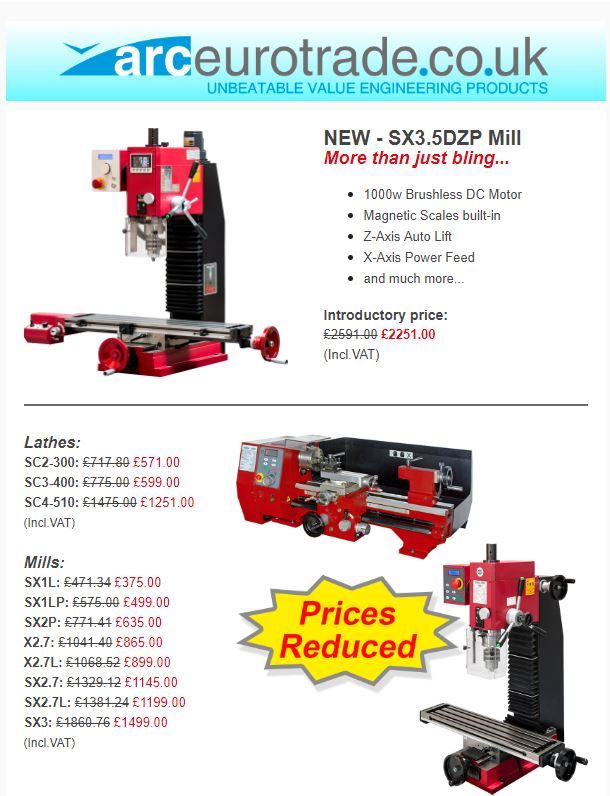Posted by Bob Mc on 21/09/2018 21:24:29:
Ha…! this is uncanny….!
Re: my post 20.09.2018
in the latest issue (ME 4596) Graham Sadlers article series on "Lathes and more for beginners" actually says that some of the cheaper toolholders do not hold the blade properly giving no clearance either side and are best avoided..
As a famous person once or twice said… "I don't believe it ! " the makers of these bladeholders must surely know that they are making something destined to cause problems…for the sake of setting over the milling machine a degree or two when cutting the blade holder profile… it might work …but its not right… and I noticed I got a better finish on the sides of the work when the blade was set correctly and is a delight to work with.
Manufacturers in the Eastern countries making many of these tools very rarely puts its name on its products, I may be old fashioned but I do remember reading many years ago not to buy anything where the manufacturer was not confident in putting his name on what he has produced, I am minded to send it back to the supplier.
Bob.
Most of these toolholders are designed to work with parallel sided blades. Rather than Graham's tool being badly designed, I think it was supplied with the wrong blade, presumably the same supplier for yours too.
I have two bought parting toolholders with vertical slots and one I made myself, all of which are used with parallel blades and work very well, thank you.
It's a myth that parallel parting blades will jam – but they must be held vertically.
Neil
Edit: home made holder for parallel blade:

Edited By Neil Wyatt on 21/09/2018 21:53:50
Edited By Neil Wyatt on 21/09/2018 21:54:53
 Neil Wyatt.
Neil Wyatt.






